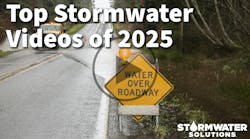Maintaining Roads, Protecting Wildlife
In 1999, the federal government listed both Puget Sound Chinook salmon and bull trout as “threatened” under the Endangered Species Act (ESA). In response to these listings, local governments in the Puget Sound area of Washington state formed a coalition to implement conservation programs for threatened aquatic species. The Tri-County (King, Pierce and Snohomish) ESA Response Effort identified several government agency program areas with the potential to contribute to the conservation of listed species. Road maintenance was identified as one of these programs.
Local road maintenance managers, engineers, field crews and environmental staff teamed up to form the Road Maintenance ESA Technical Working Group. Together they set out to develop a road maintenance program that would contribute to the conservation of salmonoids and other fish species while meeting the federal agency requirements under Section 4(d) of the ESA.
The Road Maintenance ESA Technical Working Group produced a maintenance manual (regional program) designed to keep roadways safe while also contributing to the recovery of listed aquatic species. The best management practices (BMPs) within the program were developed with the idea that BMPs should not take a “cookbook recipe” approach, but rather be outcome-based. The BMPs in the regional program focus on three main outcomes: minimize erosion/sedimentation, contain pollutants and maximize habitat improvements.
Recognizing the difficulties encountered when implementing BMPs, particularly when conditions vary from site to site, the regional program provides a menu of options. This allows crews, supervisors, design engineers and environmental staff the flexibility to select the most effective BMPs for each site.
Road maintenance group team members presented the manual to NOAA Fisheries Service, and it earned approval as a conservation program for Chinook salmon. Therefore, any agency that adopts the program is protected from third-party lawsuits by NOAA Fisheries Service. In order to obtain coverage, an agency must make a written commitment to NOAA Fisheries Service promising compliance with the 10 elements of the regional program. The elements are as follows: regional forum, program review, training, compliance monitoring, scientific research, adaptive management, emergency response, biological data collection, reports and BMPs.
These program components form a systematic process of procedures and events that track the program’s effectiveness in achieving conservation goals. Their guidelines, which can be viewed at www.metrokc.gov/kcdot/roads/esa, provide a framework for planning, scheduling and identifying appropriate erosion and sediment control practices for common road maintenance projects. The implementation of BMPs and the training of crews in selecting, installing, monitoring and ensuring BMPs achieve their desired outcomes form the foundation of the program.
Download: Here

